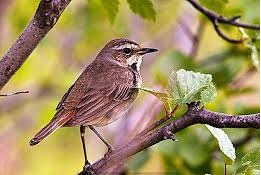Neighbourhood is a geographically localized community within an area, may it be a rural area, a town or a city, or sub-urban. Neighbourhood are considered as social communities in which face-to-face interaction among people take place.
In general terms, neighbourhood may be defined as a specific geographic area having a set of social networks.
Neighbourhoods are typically generated by social interaction among people living near one another. In this sense neighbourhoods are local social units larger than households not directly under the control of city or state officials.
In some pre-industrial urban traditions, basic municipal functions such as protection, social regulation of births and marriages, cleaning and upkeep are handled informally by neighbourhoods and not by urban governments.
In addition to social neighbourhoods, most ancient and historical cities also had administrative districts used by officials for taxation, record-keeping, and social control.
Administrative districts are typically larger than neighbourhoods and their boundaries may cut across neighbourhood divisions. In some cases, however, administrative districts coincided with neighbourhoods, leading to a high level of regulation of social life by officials.
Neighbourhoods have several advantages as areas for policy analysis through mapping and representation, as well as an area for social action:
1.Most people in neighbourhood in urbanized area consider themselves as living in one.
2.Neighborhoods are convenient, and always accessible, since a man is already in his neighbourhood when he walks out door.
3.Successful neighbourhood action frequently requires little specialized technical skill.
4.With neighbourhood action, compared to activity on larger scales, results are more likely to be visible and quickly forthcoming. The streets are cleaner; the crosswalk is painted; the trees are planted; the festival draws a crowd.
5.Visible and swift results are indicators of success.
6.Because neighbourhood action usually involves others, such actions create or strengthen connections and relationships with other neighbours, leading in turn to a variety of potentially positive effects.
In addition to the benefits detailed above, strong and cohesive neighbourhoods and communities are linked to decreases in crime, better outcomes for children, and improved physical and mental health. The social support that a strong neighbourhood may provide can serve as a buffer against various forms of adverse conditions.
Rural – Urban Houses and Slums
There is a vast gap between rural and urban houses in India. A well-connected village may have some good built concrete houses with the supply of electricity. Otherwise, houses in remote areas are usually built of clay and thatched roofs. People living below poverty line are often homeless.
In India, around 1% of the rural population is reported to be without a home. About 60% of the homeless population is from rural areas. In terms of housing units, the housing shortage is estimated to be 148.33 lakh houses. The shortage of housing has increased at the rate of 0.89 million houses per year during 1991 -2002.
Housing in urban areas is currently marked by increasing number of shopping malls, apartments, and multiplexes. However, the dark side of the urban housing is increasing number of slums. It is reported that the number of slum dwellers is growing 22% faster than that of the urban population. About 14% of the urban population lives in slums and their numbers are growing faster than those of entire cities. According to estimates, while the urban population is growing at an average 2.7%, the number of slum dwellers has been rising at 3.3%.
The National Sample Survey Organization (NSSO) estimates that the slum dwellers’ tally has increased over the last ten years. In 1993, 60 lakh urban households lived in slums. By ’02, when the last survey was conducted, the number had increased to 80 lakh households.
Feature Image : The Indian Express




